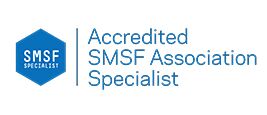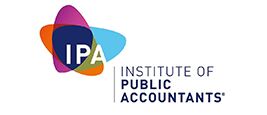Every business, no matter the size, needs effective bookkeeping. However, if yours is a small or medium business, it’s a possibility that you are a newcomer. A constructive bookkeeping process will ensure that you stay at the top of your business finances, being able to make better gains and utilise your funds in the best possible manner. For this very reason, optimal knowledge about a functional bookkeeping process is essential.
Bookkeeping is the process of accounting that focuses on maintaining and organising financial statements. It is mainly concerned with keeping records, classifying them and arranging them to the correct accounts.
Elaborated below is a detailed guide to bookkeeping for small and medium businesses.
Familiarise Yourself with Basic Bookkeeping Terms
Prior to diving further into bookkeeping essentials, it is vital to understand the major terms that one will encounter in the process. Without basic knowledge of these, bookkeeping will just be a process that goes above your head. Such significant terms are as follows.
Assets: Assets are the resources, including liquid cash, properties and more, that your business owns. Assets can be sold for more revenue or can help in gaining income (factory equipment, property and so on).
Liabilities: Liabilities are essentially what your business owes to third parties such as banks, partners, employees and such. These include debts and mortgages among others.
Capital: Capital comprises of your own personal assets that have been invested in the business. This amount can be found out by obtaining the difference between assets and liabilities of your business.
Income and Revenue: Your income or revenue is the money that you make through business activity i.e. selling of goods. This can be hereby termed as your business inflow.
Expenditure: The exact opposite of income, expenditure is the amount you spend to keep your business activity running. This includes the cost of equipment, electricity, money spent on furniture, salaries and so on. This can be defined as your business outflow.
Equity: Unlike capital which is made up of assets that an owner invests, equity is the actual share of assets that a person owns in his/her business. This essentially excludes the assets that are financed through loans and other liabilities.
Depreciation: The loss in the value of your assets, owing to the wear and tear in the long-term is known as depreciation. This will be set as an expense in your books.
Set Up a Separate Business Account
When you start your business activity, it is advisable that you open another account, specifically for your business. For companies, this is a prerequisite, but it is a norm for businesses of all sizes. The main reason for this is that it helps segregate your personal and professional finances into two seperate accounts, ensuring ease of business processes. Through this segregation, you can easily find business transactions at one place without any unnecessary downtime.
In addition, through a business savings account you can already set off a certain amount for taxes. This will save you any trouble with the authorities. Similarly you can also set off an amount for debt.Although, before opening a business account it is necessary to remember that these are more expensive than personal accounts. It is hence pivotal to do enough research of terms at different banks. You can then choose one that lets you set up an account at the most budgeted prices and provides the best benefits.
Choose a Bookkeeping Method
Prior to commencing bookkeeping, it is crucial to understand the two types — single-entry bookkeeping and double-entry bookkeeping.Single-entry bookkeeping is the method by which a transaction is recorded in the books a single time. On the other hand, one transaction is journaled two times, in terms of credit as well as debit.For small businesses, usually an uncomplicated single-entry bookkeeping system is preferred. Meanwhile, for a medium and large business, a double-entry system is more accurate. For example, if you are purchasing equipment you will record it as debit, since you are losing cash, and credit, since you are gaining an asset.
Journal Each Transaction
The most critical element of functional bookkeeping is maintaining your records accurately. Be sure that you are journaling each and every business transaction. This will ensure accurate reports which will pave the way to meticulous accounting.
In today’s age, a general ledger can be maintained in various forms. These are:
1) Recording transactions via an Excel spreadsheet
2) Maintaining a manual journal
3) Using Cloud-based desktop bookkeeping applications
While applications are more expensive than spreadsheets and manual ledgers, these ensure a better, error-free experience.
Close Your Books
The final step in the bookkeeping process is preparing a balance sheet. This is a document that matches up your assets to equity and liabilities in order to find a balance. Here, regular updating of your general ledger will help. Moreover, if your assets are $2000 and liabilities are $1000, the remaining $1000 can be adjusted as profit. In case your account does not end up tallying, it might indicate an error in your calculation process or your journaling method.
Assemble Other Essential Financial Reports
Besides balancing your accounts, bookkeeping can give you an idea about the overall financial health of your business. This can be done by preparing other reports such as an income statement and a cash flow statement.
Income Statement: This will compare your income and expenses over a period of time, giving you an outcome in the way of profit or loss. Through this report, you can consequently make a forecast about your company’s future.
Cash Flow Statement: Just like an income statement records expenses and revenue, a cash flow statement records inflow and outflow of just liquid cash. This will give you an idea about the actual money that your business is making and determine your ability to pay bills.
Be Consistent
When it comes to bookkeeping, a prime tip is consistency. It is paramount that you maintain your books without any procrastination in order to keep up with all transactions without missing out on anything momentous. An efficacious way to take care of this is by looking at your books when you start your day instead of the end. This way you will not be lethargic enough to delay the work.
Decide Between DIY and Outsourcing
There are two ways in which you can implement bookkeeping. If you are confident enough, you can do it by yourself. Nonetheless, it is central to remember that since you aren’t a specialised professional, you can make errors. Hiring a professional accountant and business advisor is a wiser decision if you want your books to be precise. In addition, it will help you save up on time as well as money lost due to mistakes. If your firm is big enough, you can also hire an in house bookkeeper to do the work.
Looking for professional bookkeeping services in Australia for your small business, there is none better than Zimsen Partners. Our qualified professionals will provide the best business advice and accounting solutions. Call to avail our exceptional services today.











